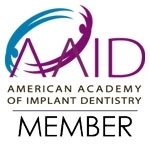Bruxism is the medical term for excessive tooth grinding and/or jaw clenching. Because our jaw muscles are capable of producing hundreds of pounds of force, continuous grinding and clenching can cause significant damage to teeth and jaws without dental intervention. Unconscious grinding or clenching
Read more
Articles
-
Bruxism
Category: Cosmetic & General Dentistry
-
Clear Aligners for Adults
Category: Orthodontics
Clear aligners are a popular alternative to metal braces, and are a great, discrete way to correct minor misalignment of the teeth. Just like traditional braces, clear aligners put a small amount of pressure on the teeth to move them into place. Unlike traditional braces, they are made of a clear and
Read more -
Clear Aligners for Teens
Category: Orthodontics
Clear aligners are a popular and effective way to straighten teeth – without the look or hassle of traditional braces. Just like traditional braces, clear aligners put a small amount of pressure on the teeth to move them into place. Unlike traditional braces, they are made of a clear and completely
Read more -
Cleft Lip and Palate
Category: Oral Surgery
A cleft lip and cleft palate are common birth defects that occur in the very early stages of fetal development. A cleft lip is the separation of the two sides of your child’s upper lip, appearing as a narrow or wide opening that can extend to the roof of the mouth. A cleft palate is a split or opening
Read more -
Combined Root and Gum Problems
Category: Endodontics
Sometimes it can be difficult to detect exactly where pain in your mouth is coming from. And with the combination of symptoms you’re experiencing, it may be even harder to decipher which oral complication could be happening. Typically, when an infection is taking place, it has either started in the
Read more -
Common Dental Procedures
Category: Cosmetic & General Dentistry
Your dentist is an expert in protecting your oral health. In addition to providing preventive care, they diagnose and treat the teeth, gums, mouth, and jaw. Dentists improve self-confidence with functional and cosmetic restorations. Common procedures which can restore the health and the appearance of
Read more -
Cone Beam CT Imaging
Category: Technology
Cone beam CT imaging provides dentists with a three-dimensional view of mouth, jaw, teeth, and nasal cavity. These images contain invaluable clinical information and help reduce the need for invasive procedures, shorten treatment time, and make treatment plans more effective and efficient. With 3D scans,
Read more -
Consequences of Losing Teeth
Category: Implant Dentistry
Losing teeth can cause discomfort and difficulty eating and speaking, but it also can negatively affect our jawbone. Bone needs stimulation to maintain its form and density. When you lose teeth, your jawbone loses the stimulation it needs to stay strong and keep its form and begins to deteriorate. Consequences
Read more -
Corrective Jaw Surgery
Category: Oral Surgery
Orthognathic surgery, also known as corrective jaw surgery, aims to correct abnormalities of the jawbones in order to realign the jaws and teeth to improve overall function. This surgery can also improve the outside appearance of your face. If you have problems with your jaw that cannot be corrected
Read more -
Cosmetic Gum Surgery
Category: Periodontal Therapy
Cosmetic gum surgery, or gum contouring, can solve a variety of cosmetic issues relating to the proportions of your teeth and your gums. For example, too much gum tissue may make your teeth appear short, while too little gum tissue will make your teeth appear too long. You may also have a combination
Read more -
Crown Lengthening
Category: Cosmetic & General Dentistry
If you are concerned about excess gum tissue or an uneven gum line, crown lengthening and gum contouring are minimally invasive periodontal procedures that can improve the balance of your gums and teeth, creating a well-proportioned and symmetrical smile. Crown lengthening, also known as a gum lift,
Read more -
Crowns
Category: Cosmetic & General Dentistry
Decayed, broken, and missing teeth affect your oral health and your self-confidence. When a tooth has suffered structural or cosmetic damage, a dental crown can restore a tooth’s function and appearance. A crown is a custom-made “cap” that covers the entire visible surface of a tooth. Your dentist
Read more -
Dental Exams and Professional Cleanings
Category: Oral Health
Brushing and flossing at home to keep up your oral health is great, but it’s also important to visit the dentist for checkups and professional cleanings at least twice a year. These checkups allow your dentist to identify any problems in your mouth that you cannot see just by looking in the mirror,
Read more -
Dental Implant FAQs
Category: Implant Dentistry
What are dental implants? A dental implant is a small post that serves as a replacement for a tooth root. An abutment, also known as a connector, is built and placed on the top of the implant, connecting to the replacement tooth. The replacement tooth is a crown that is created to uniquely match your
Read more -
Dental Implants
Category: Implant Dentistry
If you have recently dealt with an injury or disease that affected your oral health, there are options available to recover the smile you once had. You may even be able to achieve a better smile than the one you had. Dental implants make it possible to renew your smile if you have lost some teeth. There
Read more -
Dentures
Category: Cosmetic & General Dentistry
Missing teeth impact not only appearance, but oral health as well. If you’ve lost some or all of your teeth because of trauma, periodontal infection, or decay, dentures are one of the options which can offer you a healthier, more attractive smile. Full or partial dentures: Make eating and chewing
Read more











